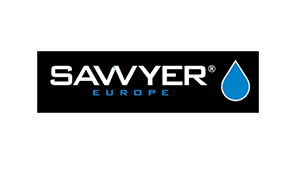
Our first line of Protection in the outdoors is our clothing and there is certain ways you can put on your clothing to get the best out of them and it is known as the layering system. The layering system is made up of three layers starting with the base layer, moving onto the mid layer and finishing it off with the outer shell. We will break down each layer and talk about what they do and what are some of the best materials on the market.
The first layer in the system is the base layer and it is the closest to your skin, so it collects all your sweat. The purpose of this layer is to keep you dry by pulling moisture away from your skin and spreading it throughout the fabric. At the same time this fabric should fit tight and retain some insulation properties. Never wear cotton as a base layer, which does wick moisture away, however it then retains that moisture as the cotton loses its resiliency, loses its warmth, and causes too much evaporative cooling. There are two main categories of base layers: synthetic and wool. Examples of synthetic layers are polypropylene and polyester the benefits of which are that they are not itchy, tend to be less expensive than wool, are more durable, and fast drying. The downside to the synthetic base layers is that they tend to hold odour.
People base their choice of material on a number of reasons, for example many feel that wool insulates better than synthetics and stays comfortable throughout different types of climates. Wool takes longer to dry than synthetics but they do continue to insulate well even whilst wet. Today most wool base layers are made from merino wool which is a lot thinner and lighter than normal wool and also less itchy. A down side to wool base layers is that they seem to get damaged a lot easier than synthetics so if you are a rock climber you are probably best with a synthetic base layer. Walkers on the other hand are better using merino wool.
Base layers come in different thicknesses depending on your chosen activity, so if you are a mountaineer you would be better off with a thinner one due to the strenuous activities you will be carrying out throughout the day.
The next part of the layering system is the mid layer and its primary purpose is to insulate. This part of the system can be doubled up if the weather is extremely miserable. A midlayer’s job is to trap as much of the body heat as possible.
Four of the most common types of midlayer are fleece, pile and pertex smocks, insulated synthetic jackets and down jackets. We will cover the pros and cons of each.
FLEECES- fleece is the name given to a range of materials made from synthetic fibres which are commonly used for insulation clothing. Fleece tends to be lighter than wool for the same level of insulation. It also retains much of its insulation properties when wet, since it’s hydrophobic (meaning that it only holds a small amount of water) it will dry more rapidly too. There are warmer insulation layers than fleece; some fleeces can be rather hard to pack down small, if you are looking to save space in your pack. But if you are looking to save money fleece is a good bet.
PILE + PERTEX– pull over tops that are furry on the inside with a nylon shell on the outside. Pile or fibre pile works in a similar way to animal fur. It provides insulation against the cold and knits tightly together to retain that insulation when wet. Being made of many small strands allows the pile to dry quickly too and feel less chilly against your skin as the tips dry first. These smocks also have a shell made of pertex or a similar nylon material that makes them tougher and offers some wind resistance. Some pros are that this type of material is really tough and can be treated rough and still work at its best for you. They also have an advantage over synthetic and down jackets and that is that they have pile which means they wick sweat and breath much more effectively than the down and synthetics. The main down side to these are that they tend to be much bigger and heavier than the down and synthetic jackets.
SYNTHETIC INSULATION JACKETS– are similar to down jackets except that they use a synthetic filling rather than animal feathers and down. They’re much the same as synthetic sleeping bags. They tend to have shells made of thin nylon or pertex which gives them a shiny, plastic look. They are filled with synthetic microfiber which mimics the lofting properties of down while staying water resistant. The most common brand of this microfiber filling is primaloft. These jackets do offer a really good level of warmth for very low weights from 200g or less and without the fragility and fear of water that you get with down. They also tend to be cheaper. However, if you are going somewhere dry then a down jacket will give you better warmth for its weight.
DOWN JACKETS– Down is a type of very thin feather which has strong insulation properties. It is particularly useful in outdoor clothing because of its excellent warmth to weight ratio. Down jackets are much like a down duvets, down pillows and down sleeping bags. The quality of a down jacket can be assessed on three metrics
1– down to feather ration- fluffy white down is warmer than actual feathers of an animal but more expensive. As such, a cheaper down jacket might only contain 80% down, with the remaining 20% being feathers, whereas a more expensive one might contain 95% down.
2- Fill Power(loft): fill power is a technical measurement for a down’s loft that is how much space a given weight of it fills. The more space it fills the warmer it will be. A cheaper jacket might have a fill power of 500 and a top quality one might be 800+
3– Animal pedigree- Different birds from different parts of the world are variously heralded as having the best down. Canadian goose down is a popular choice, for example.
Down provides better insulation for a given size and weight than any other material, natural or manmade. The problem with down jackets is that they are expensive, often a bit fragile and are highly susceptible to water. When down gets wet it clumps together and its insulation properties plummet. Of course any clothing that gets wet is not going to insulate you as well but this starts to happen even when down gets just a little damp and the effects can be permanent. It is a delicate process to dry down out without ruining it and while it is possible to get down jackets with waterproof shells, this feature makes them bigger and heavier and you can still get moisture inside which then becomes even more difficult to dry properly.
The last part of the layering system is the outer shell; this layer is there to keep you dry from any sudden downpours of rain. These jackets can carry quite a heavy price tag so when buying one you want to make sure that you are getting the right one for the activity you are going to be undertaken. For example, if you were a climber you would want a jacket that has plenty of mobility, for skiing you might prioritise breathability. As the number of outdoor enthusiasts has increased over the years there has been a growth of outdoor clothing business, bringing with it different kinds of water proof fabrics thus it can be rather confusing to get your head around what each one does. We will cover a few including GORTEX Pro, GORTEX Active, eVent and Dry.Q.
Most hardshell jackets you buy from the shop will come with a DWR coating (Durable Water Resistant). This coating is what allows the water to ball upon the jacket and run straight off. However it is only a coating and with time and wear on the product it will come off yet there are products you can buy to reapply this coating.
GORTEX make four primary waterproof breathable membranes that are designed for specific end use: The GORTEX Pro is the company’s best product as it offers a 35% increase in breathability over other brands of GORTEX. It also offers the company’s best abrasion-resistance –to-weight ratio. It is also the most expensive membrane you can buy.
GORTEX Active is the newest and lightest membrane. It is not for use under certain circumstances such as being worn under a 70lb pack. It is designed for short duration trips like a day trip in the Alps.
eVent, GORTEX’s largest competitor, works using a system that they call Direct Venting. The eVent membrane allows air to flow directly through it, allowing for direct evaporation of sweat liquid. EVent also claims that their products are windproof however with the air flow membrane it is not going to be as wind proof as GORTEX.
Dry.Q Elite is a make from mountain hardwear in an attempt to separate themselves from GORTEX. Their fabrics are made from the same people that make eVent. There are several different versions, with Dry Q elite representing the top of the line.
Okay so we have covered the layering systems. I am going to cover layering in different seasons, so you have a basic level of knowledge to be able to dress effectively and appropriately for all types of weathers.
Summer Half– Day Activity – for a half day hike in the summer or short multipitch rock climbs, you will only require a two layer system. It’s going to be warm and you aren’t going to be too far away from civilization therefore there is no need to overdo it with a insulation layer. But always check the weather before you start to pack your clothing system, it is good practice to always carry a water proof layer just in case the weather does decide to change. So a base layer and an outer layer will be more than enough for a nice summer’s day.
Summer Full- Day Activity – A full day in the hills can bring with it different weather that can appear out of nowhere so a three layer system would cover you for most circumstances. It is good to pack a base layer, mid layer such as a fleece etc and either a soft shell or hardshell jacket.
Multi-day activities – There is not a huge difference between the full day and the multiday layering system. I would consider taking a spare base layer and getting rid of the fleece and changing it for a synthetic down so I have a bit more warmth in the evenings. I would defiantly be packing full water proofs with me as well.
Winter Wandering – For colder and wetter activities, such as skiing and ice climbing, a 4 layer system will work best allowing you to cool off during the periods you are working hard and to keep yourself warm during the stormy parts of your trip. So you are looking to wear a base layer, mid layer, insulation layer and have your full water proof gear with you as well.
As with all the systems mentioned above you can apply the layering system to your legs as well as your upper body and always carry water proof hat and gloves with you at all times. Furthermore, to be extra safe, you can carry a spare set in the bottom of your bag with your emergency kit.
There are 4 main ways in which our bodies can lose heat in the mountains;
Evaporation– so if you are wet from sweat or precipitation, the process of evaporation cools you down. Evaporation is the primary cooling function of your body sweating in the first place, but in a cold environment this can be dangerous because it can cool you off too much and put you in a situation where you can’t get warm again. We all have the common sense to wear waterproof clothing if it’s raining to keep us dry but what some people tend to forget is how dangerous their own sweat can be. If someone for example goes out for a hike in a cotton t-shirt, that t-shirt is going to get soaked in sweat and it has not got the correct properties in the fabric to dry itself out. If the wind picks up it could start to create a possible dangerous situation for you. It is the cooling power of evaporation that motivates layering systems to wick moisture away from your body and breath, allowing you to stay cool and relatively dry.
Radiation– Your body gives off heat. If too much escapes to a cold environment, it is harder to keep your core temperature up. So keep your whole body covered up in a mountain environment to lower the risk of you losing heat to the elements.
Conduction– Your body loses heat by touching something colder than it is. This is the reason we use roll mats when camping. They keep our body warmth near our bodies and don’t let the heat soak into the cold ground. Conduction also comes into play in a cold rain, sleet or snow storm. Each rain drop that lands on your skin will suck away body heat.
Convection– We have all heard of the wind chill factor, where the effective temperature is much colder due to wind. The reason wind chill can be so deadly is that it combines the worst of evaporation with convection, leaving you with a double dose of cold. Convection is the cooling from the movement of air and fluids. Convection works like this: cold air or water moves near your body, heats up and moves away, allowing more cold air or water to reach your body again, cooling you off. Bottom line is that nothing will so rapidly throw you down the path to hypothermia as wind’s one-two punch of evaporation and convection.












 Message an Instructor now
Message an Instructor now